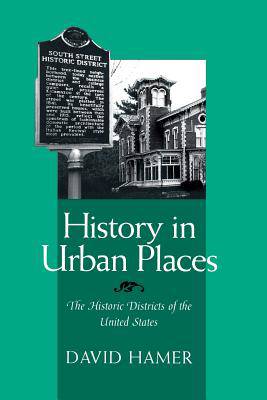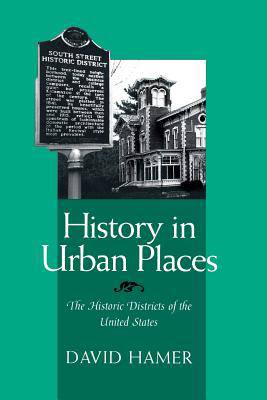
En raison d'une grêve chez bpost, votre commande pourrait être retardée. Vous avez besoin d’un livre rapidement ? Nos magasins vous accueillent à bras ouverts !
- Retrait gratuit dans votre magasin Club
- 7.000.000 titres dans notre catalogue
- Payer en toute sécurité
- Toujours un magasin près de chez vous
En raison de la grêve chez bpost, votre commande pourrait être retardée. Vous avez besoin d’un livre rapidement ? Nos magasins vous accueillent à bras ouverts !
- Retrait gratuit dans votre magasin Club
- 7.000.0000 titres dans notre catalogue
- Payer en toute sécurité
- Toujours un magasin près de chez vous
Description
"This is the first book devoted to an examination of the significance of historical districts from a historian's point of view." -Urban Studies Historic Districts in the United States now number over 8,000; the phenomenon of the Historic District has been of special interest to those concerned with historic preservation and town planning, but there has been no analysis of such districts' significance from a historian's point of view. History in Urban Places explores the connections between American urban history and historic preservation. A frequent criticism of historic districts is that they convey sanitized versions of the past and that their creation is prompted more by the needs of present-day real estate values, the impulse to gentrify, or the urgent need to rehabilitate inner-city areas than by a desire to preserve the past. David Hamer claims that historic districts are best understood as part of the growth and development of urban communities-examples of applied urban history that should be studied as such. Hamer argues that four stages of history are represented by historic districts. The first is the history that the district actually embodies; the second is the story of what happened to the district from the time historically significant events occurred until the present, when those events are judged to be significant; the third is the process leading to the district's classification as historic; and the fourth is the history of the district once the designation is official. David Hamer is a professor of history at Victoria University of Wellington, New Zealand. He is the award-winning author of New Towns in the New World.
Spécifications
Parties prenantes
- Auteur(s) :
- Editeur:
Contenu
- Nombre de pages :
- 256
- Langue:
- Anglais
- Collection :
Caractéristiques
- EAN:
- 9780814207901
- Date de parution :
- 01-09-98
- Format:
- Livre broché
- Format numérique:
- Trade paperback (VS)
- Dimensions :
- 155 mm x 229 mm
- Poids :
- 362 g

Les avis
Nous publions uniquement les avis qui respectent les conditions requises. Consultez nos conditions pour les avis.






